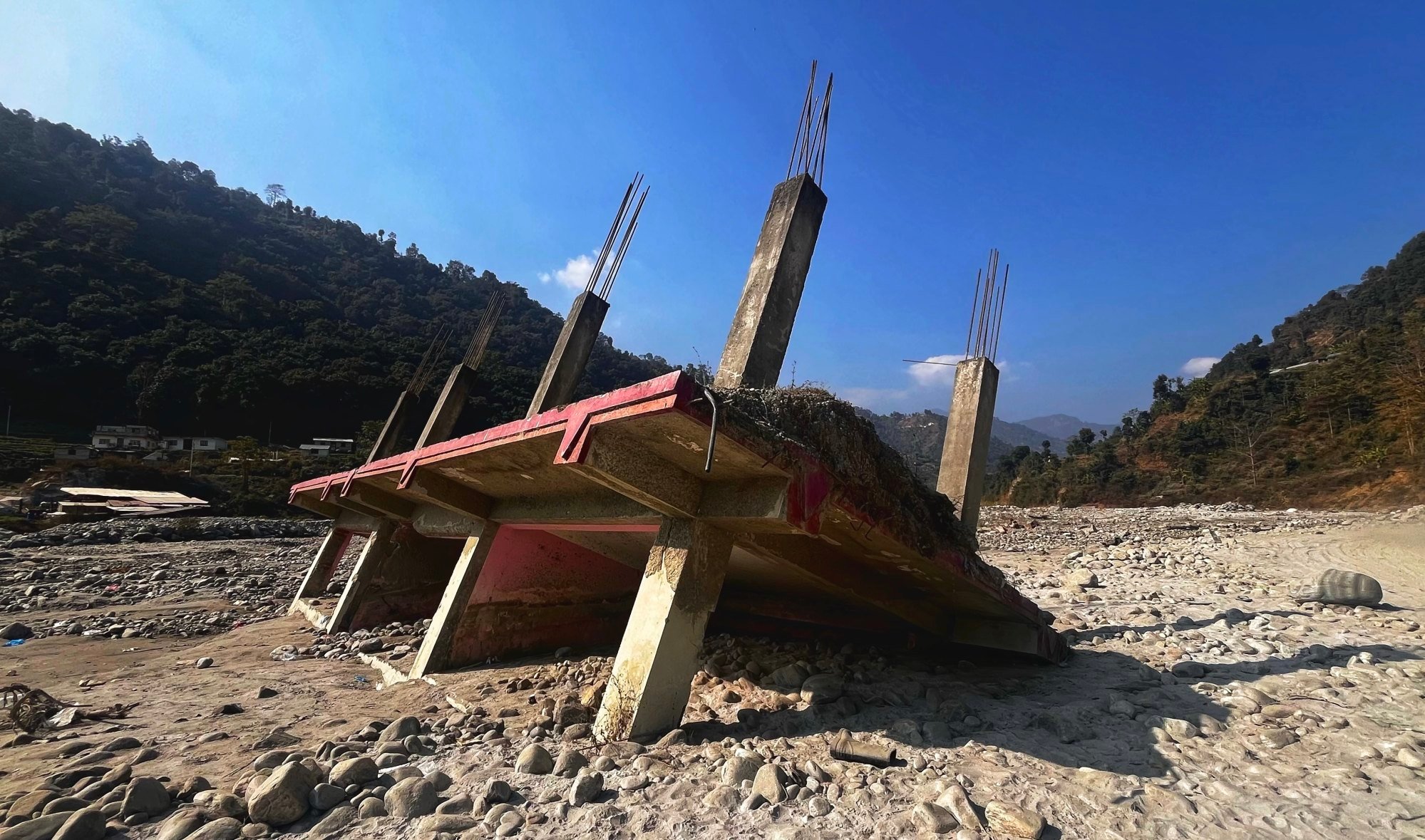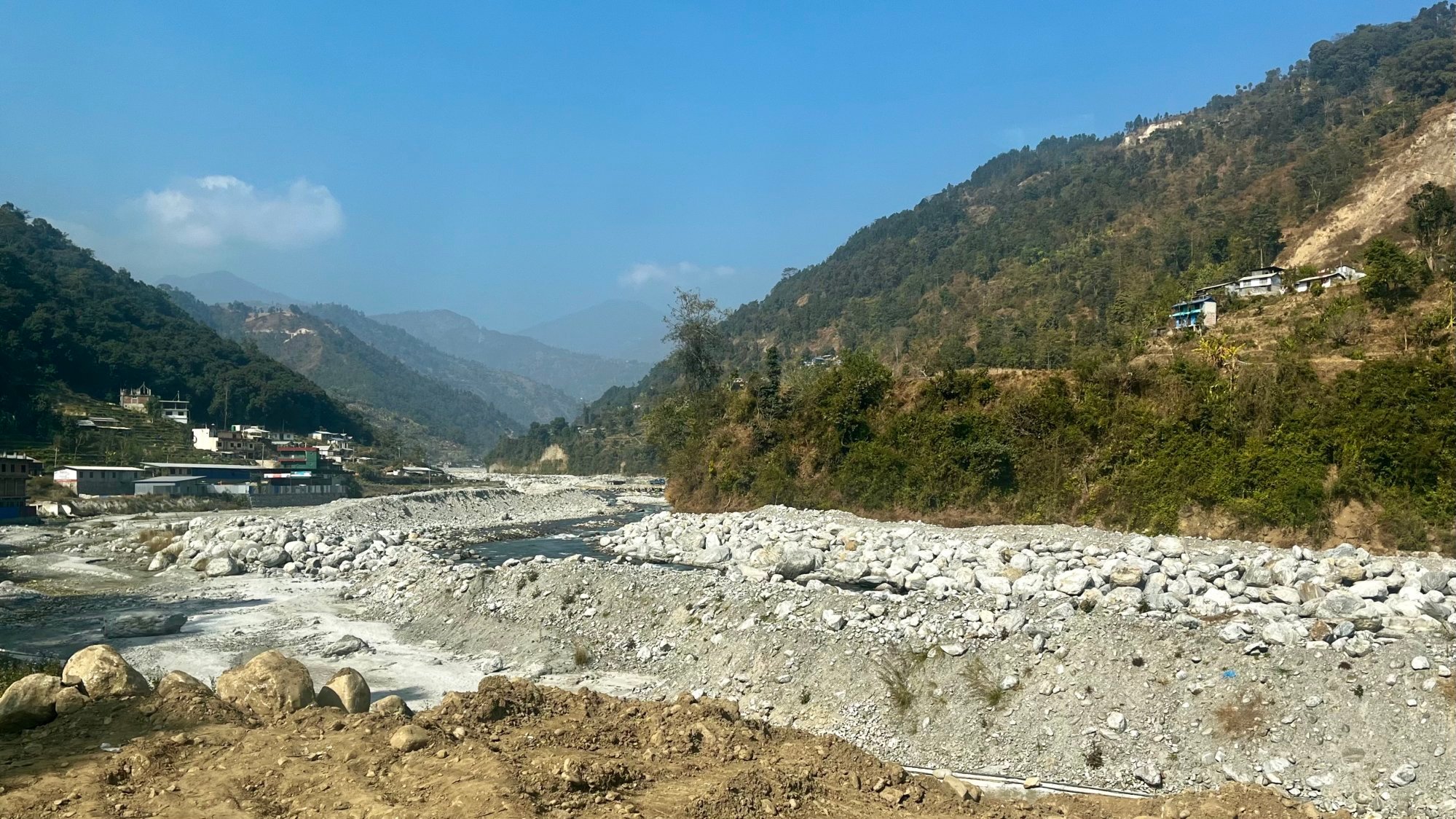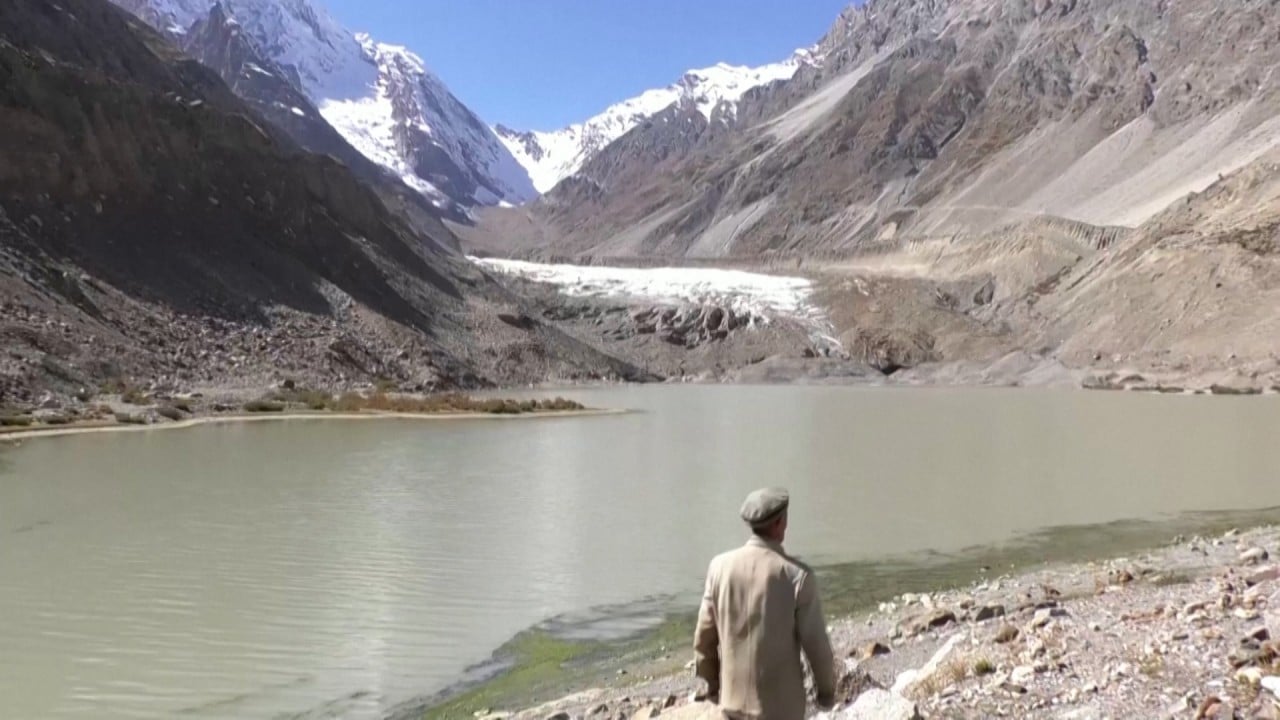
Nepal’s devastating 2021 floods show need for early warning systems in the Himalayas: ‘I lost everything’
- Nepal’s twin flood disasters in 2021 are examples of the havoc that climate change will increasingly wreak and highlight the need for early warning systems
- The Hindu Kush Himalaya region is projected to experience warming of at least 0.3 degrees higher than the rest of the world, a scientist says
“We have never seen such floods here. I lost everything I had saved until now. My hotel is gone, and so is my shop”, he said, pointing towards the debris of his multi-storied hotel in Melamchi Bazaar, beyond which lies massive boulders and rubble, even two years after the disaster, on lands that had once been lush paddy fields and trout farms.
Shreshta’s life was one of many shattered by devastating twin floods that hit Nepal’s Melamchi and Helambu municipalities in 2021, disasters that environmentalists say serve as stark examples of the havoc that climate change will increasingly wreak on the fragile ecosystem of the Hindu Kush Himalaya region (HKH) and highlight the need for early warning systems.

Situated in the lap of the Himalayas in central Nepal’s Bagmati region, Melamchi in Sindhupalchowk district was once a bustling town, frequented by backpackers and tourists as a stopover en route to Helambu and further to the Jugal-Himal trek.
Melamchi was a popular destination for foreign tourists until the infamous earthquake of 2015 kept most tourists away.
In 2021, floods struck on June 15 and July 31. Melamchi and Helambu were ravaged by a debris-laden flood, stretching 40km (25 miles) downstream from the mountains.
Twenty people lost their lives in the Helambu-Melamchi floods, which included two Indians and a Chinese citizen, while a handful remained missing. Over 360 families were reportedly displaced, with their homes and farms destroyed. Downstream in Melamchi Bazar, motorway bridges, suspension bridges, government buildings and houses were destroyed.
Precarious ‘third pole’
The Intergovernmental Panel on Climate Change has called on the international community to take drastic measures to reduce carbon emissions enough to limit the increase in global average temperatures caused by climate change to 1.5 degrees Celsius (34.7 Fahrenheit), which they say should be enough to avoid its worst impacts. However, environmentalists in the HKH region say that might not be enough.
In Nepal, deformities in birds expose ‘worrisome’ impact of pollution
The HKH region is projected to experience warming of at least 0.3 degrees higher than the rest of the world, said Dr Basanta Raj Adhikari, director of Nepal’s Tribhuvan University’s Centre of Disaster Studies. This implied that global warming of 1.5 degrees would result in an estimated temperature rise of 1.8 degrees across the region and up to 2.2 degrees in mountainous areas.
The Himalayan region is already seeing the impacts of global warming: milder winters, hotter summers and natural disasters like landslides, avalanches, and glacier lake outburst floods are becoming increasingly common.
Adhikari, who studies landslides and disasters to develop early warning systems, said while there was “no singular triggering aspect for the Helambu-Melamchi disaster” a combination of factors, many of them climate-change driven, likely led to it.

A 2021 report by the International Centre for Integrated Mountain Development – a regional intergovernmental knowledge sharing centre serving the HKH region – concluded that the Melamchi floods were likely caused by increasingly warm weather over the past few decades, associated with climate change-induced extreme rainfall, as well as more frequent glacier lake outburst floods, landslides and river damming.
Prakriti Resources Centre (PRC), a Kathmandu-based NGO that works in partnership with the Stockholm Environment Institute (SEI), in a 2023 study attributed the 2021 Melamchi flood to a combination of anthropogenic and climatic factors that occurred along the Melamchi River Basin.
Early warnings essential
According to data from the Nepal government, climate-induced disasters account for some 65 per cent of all disaster-related deaths in the country annually. Observers say early warning systems are vital for predicting and reducing the damage from these disasters. However, initial investigations and a study by PRC-SEI showed that Melamchi lacked such a warning system.
More attention at Cop28 urged for mountain range spanning Nepal, China, India
“We were not given any early warnings about either landslides or floods beforehand by the government”, Rachana Shreshtha, a health worker in Melamchi, told This Week in Asia. “It was only through phone calls from relatives and villagers living in Helambu that we could evacuate to safer places in time.”
Bhagirathi Pandit, a journalist and resident of Helambu municipality, which is situated at a higher elevation than Melamchi, remembered making such calls.
On June 15, she heard boulders falling and water gushing. As she and other villagers gathered to assess the situation, they discovered significant damage already inflicted at higher altitudes. They quickly made frantic calls to warn their relatives and downstream villagers, particularly in places like Melamchi situated along the river’s path.
This was why Helambu experienced 20 deaths compared to just one in Melamchi. If not for this word of mouth early warning system, Melamchi could have seen increased casualty numbers, the PRC-SEI study concluded.

“Melamchi river is small and calm, with no history of floods, when compared to the other rivers in Nepal – a reason why early warning flood-systems weren’t in place,” Adhikari said.
The PRC-SEI study estimated the total economic loss for the Melamchi-Helambu disaster at US$498 million. This compares to a US$13.8 million in annual 2023 budget for both municipalities combined.
These numbers suggest that, even over the next decade, the government will not have enough resources to adequately address the needs of those worst affected by the disasters.
As Rachana Shreshtha gazed at the calm Indravati river, she said: “One more flood, and we will have nowhere to go.”


